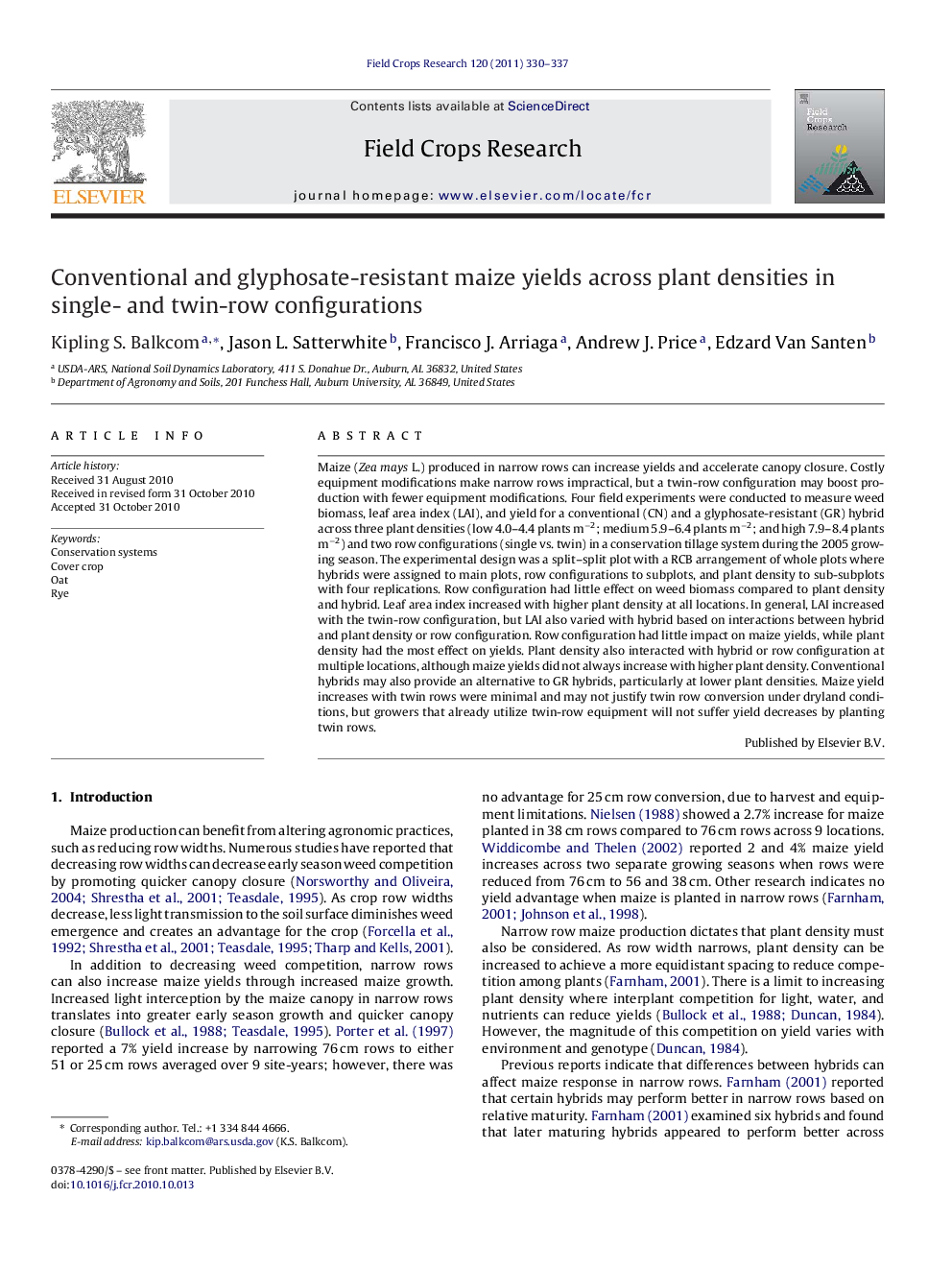| Article ID | Journal | Published Year | Pages | File Type |
|---|---|---|---|---|
| 4510832 | Field Crops Research | 2011 | 8 Pages |
Maize (Zea mays L.) produced in narrow rows can increase yields and accelerate canopy closure. Costly equipment modifications make narrow rows impractical, but a twin-row configuration may boost production with fewer equipment modifications. Four field experiments were conducted to measure weed biomass, leaf area index (LAI), and yield for a conventional (CN) and a glyphosate-resistant (GR) hybrid across three plant densities (low 4.0–4.4 plants m−2; medium 5.9–6.4 plants m−2; and high 7.9–8.4 plants m−2) and two row configurations (single vs. twin) in a conservation tillage system during the 2005 growing season. The experimental design was a split–split plot with a RCB arrangement of whole plots where hybrids were assigned to main plots, row configurations to subplots, and plant density to sub-subplots with four replications. Row configuration had little effect on weed biomass compared to plant density and hybrid. Leaf area index increased with higher plant density at all locations. In general, LAI increased with the twin-row configuration, but LAI also varied with hybrid based on interactions between hybrid and plant density or row configuration. Row configuration had little impact on maize yields, while plant density had the most effect on yields. Plant density also interacted with hybrid or row configuration at multiple locations, although maize yields did not always increase with higher plant density. Conventional hybrids may also provide an alternative to GR hybrids, particularly at lower plant densities. Maize yield increases with twin rows were minimal and may not justify twin row conversion under dryland conditions, but growers that already utilize twin-row equipment will not suffer yield decreases by planting twin rows.
Research highlights▶ Dryland maize production across the Southeast is typically limited by soil moisture attributed to the prevalent coarse soil textures located across the region. ▶ The twin-row configuration provided no consistent yield advantage, which could indicate that soil moisture was still a limiting factor across these soil types for high yield potential in twin rows, despite the use of a cover crop. ▶ The lack of consistent maize yield increases attributed to the twin-row configuration may not justify the conversion of dryland maize areas to twin rows, but growers that already utilize twin-row equipment for other crops (e.g., peanut, cotton) may consider planting maize in twin rows at plant densities <7.0 plants m−2 without suffering yield losses.
